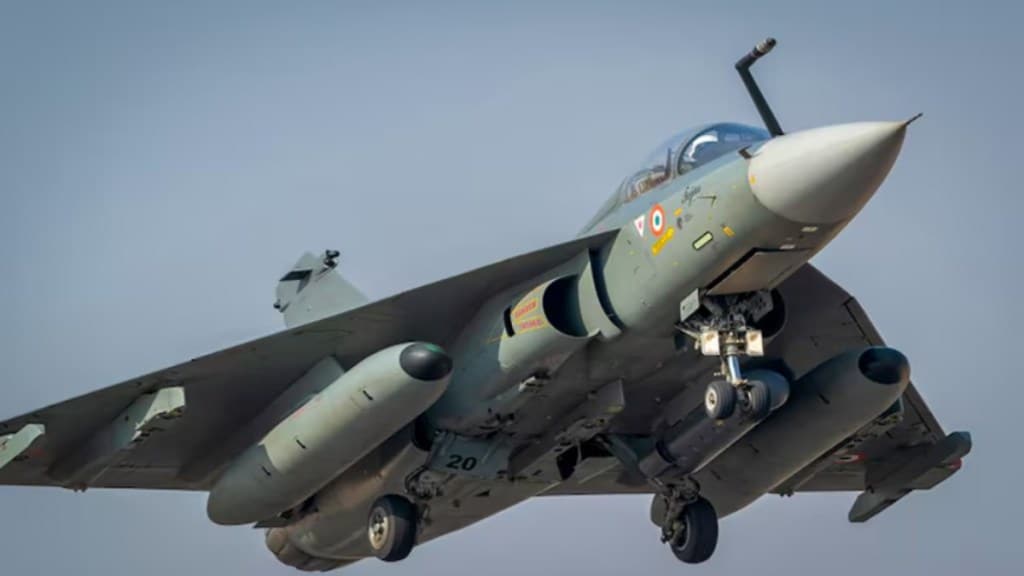For the first time in the history of the Indian Air Force (IAF), indigenous aircraft took centre stage in a major multinational air exercise, showcasing India’s growing self-reliance in defence. The Tarang Shakti exercise, held at Sulur Airbase in Tamil Nadu from August 6-14, marked a significant milestone as the Light Combat Aircraft (LCA) Tejas, along with the Light Combat Helicopters (LCH) Prachand and Light Utility Helicopters (LUH), demonstrated their capabilities to air forces from around the world.
The exercise brought together air forces from England, France, Spain, and Germany, among others. France participated with its Rafale fighter jets, while England, Germany, and Spain showcased their Eurofighter Typhoons. The participation of LCA Tejas in this high-profile exercise highlights its growing importance to the IAF and underscores India’s commitment to indigenizing its defence capabilities.
During the first phase of the exercise, LCA Tejas performed various tactical manoeuvres, impressing not only the Indian Air Force Chief, Air Chief Marshal VR Chaudhary, but also the visiting Air Force Chiefs of Germany, Spain, and France. The LCH Prachand and LUH helicopters also captured the attention of the foreign dignitaries with their agility and versatility during flight demonstrations.
Air Chief Marshal Chaudhary stressed the significance of the LCA Tejas despite its smaller size compared to other fighter jets participating in the exercise. Tejas participated in both ‘Blue Force’ (friendly) and ‘Red Force’ (enemy) scenarios, delivering exceptional performance. The exercise demonstrated the aircraft’s operational flexibility and combat readiness, reinforcing its role as a key asset in the IAF’s arsenal.
The presence of the LCA Tejas at Tarang Shakti is not just a matter of national pride, but also a reflection of the IAF’s strategic needs. As India seeks to modernize its air force, the need for a reliable, indigenous fighter jet has become increasingly pressing. LCA Tejas, developed by Hindustan Aeronautics Limited (HAL), is designed to meet this need by providing a versatile platform capable of both air-to-air and air-to-ground missions. Its participation in such a significant exercise underscores its readiness for broader deployment and its potential to reduce India’s dependence on foreign fighter jets.
The second phase of the Tarang Shakti exercise is scheduled to take place at Jodhpur Airbase from August 29 to September 14, with air forces from 31 countries, including the United States, Greece, Singapore, and Australia, participating. The inclusion of advanced aircraft such as the F-16s from the U.S., Greece, and UAE, and F-18s from Australia, alongside India’s own fleet, further demonstrates the global recognition of India’s growing defence capabilities.
Indian aircraft, including the Sukhoi, Mirage, and Jaguar, will continue to participate, alongside the LCA Tejas. The LCH Prachand and ALH Mark-4 helicopters, along with AWACS reconnaissance aircraft and C-130 transport aircraft, will also play crucial roles in the exercise. These operations aim to enhance interoperability between the participating nations and demonstrate India’s defence manufacturing capabilities.
Tarang Shakti serves not only as a platform for the Indian Air Force to hone its combat skills but also as an opportunity to showcase indigenous air platforms to the world. As India moves toward its vision of becoming a developed nation by 2047, the prominence of the LCA Tejas and other indigenous platforms in such exercises reflects the country’s commitment to achieving self-reliance in defence.
The deployment of the LCA Tejas squadron at Sulur Airbase and its active participation in this exercise is a clear indication of the IAF’s confidence in the indigenous aircraft. As the exercise progresses, the world will witness the growing strength and capabilities of the Indian Air Force, driven by a blend of indigenous innovation and international collaboration.


